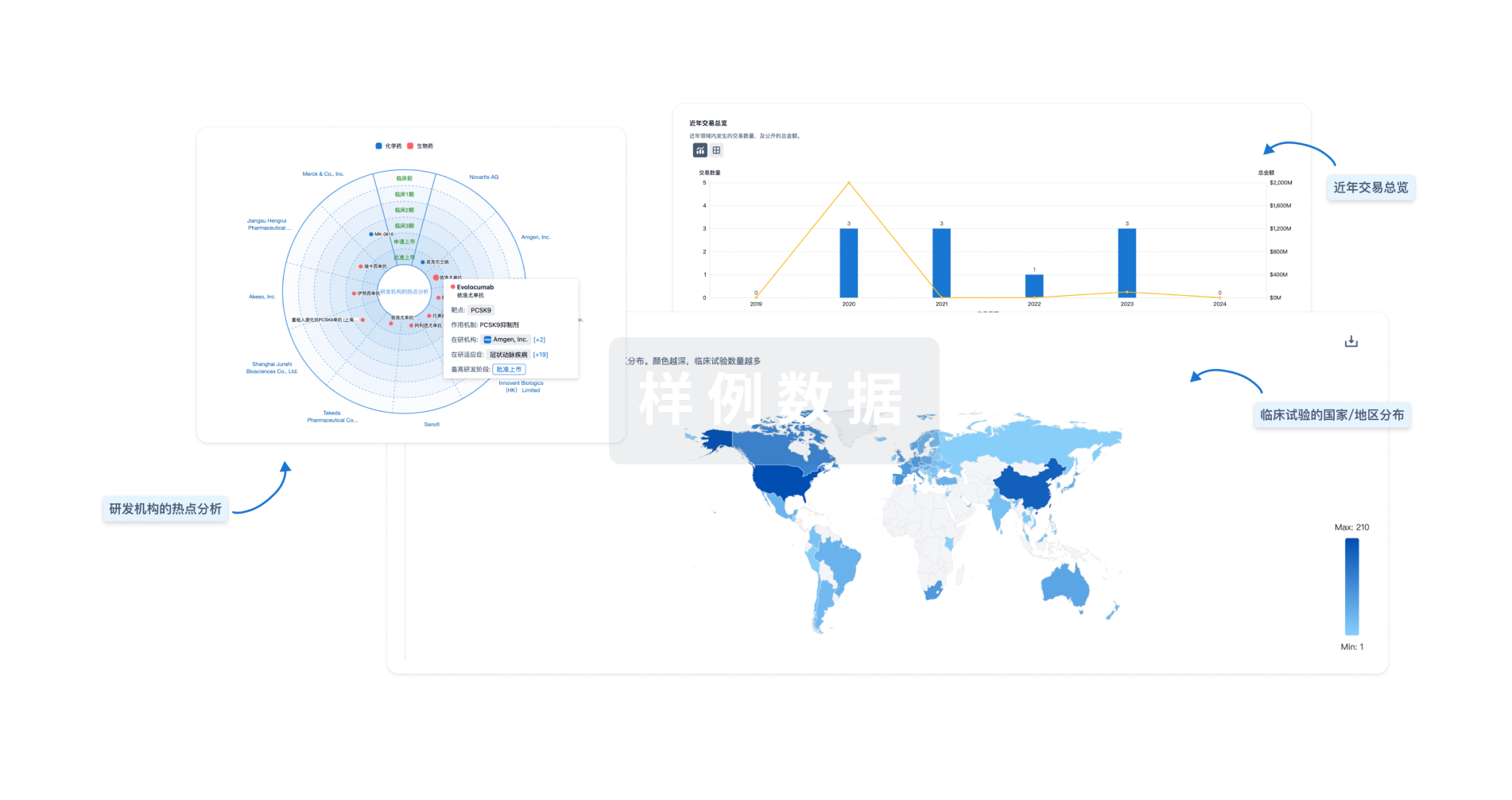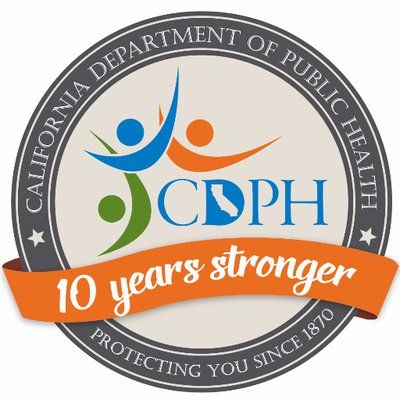预约演示
更新于:2025-05-07
BTX
更新于:2025-05-07
基本信息
别名 BoNT、肉毒杆菌毒素 |
简介 Responsible for host epithelial cell transcytosis, host nerve cell targeting and translocation of light chain (LC) into host cytosol. Composed of 3 subdomains; the translocation domain (TD), and N-terminus and C-terminus of the receptor-binding domain (RBD). The N-terminus of the TD wraps an extended belt around the perimeter of the LC; it does not seem to protect the active site, but might prevent premature LC dissociation from the translocation channel and protect toxin prior to translocation (PubMed:10932256, PubMed:17167418). Has 2 coreceptors; complex gangliosides found primarily on neural tissue and host synaptotagmin-1 and -2 (SYT1 and SYT2) which bind simultaneously to adjacent but separate sites at the tip of the HC (PubMed:17167418, PubMed:17167421, PubMed:17185412, PubMed:23807078, PubMed:8144634). HC alone partially prevents uptake of whole toxin by neural cells, and delays paralysis onset by 160% (PubMed:10413679). Binding probably positions the TD for integration into the synaptic vesicle membrane (PubMed:17167418, PubMed:23807078). The HC forms channels at low pH that mediate transport of the light chain (LC) from the endocytic vesicle to the cytosol (PubMed:3856850). Binds gangliosides GD1b and GT1b (PubMed:10413679, PubMed:14731268). Gangliosides are not only a coreceptor, but also required for uptake into nerve cells (PubMed:17167418, PubMed:21925111). HC alone binds to host receptor proteins SYT1 and SYT2 (PubMed:14504267, PubMed:15123599, PubMed:17185412, PubMed:19650874). Interaction with SYT1 protein does not require SYT1 glycosylation (PubMed:19476346). The HC C-terminus (approximately residues 1079-1291) interacts with host SYT2 (PubMed:15123599, PubMed:17167418, PubMed:17167421, PubMed:23807078). Has higher affinity for SYT2 than SYT1 (PubMed:17167421, PubMed:17185412). Significantly decreases uptake and toxicity of whole BoNT/B and BoNT/G (PubMed:19650874).
Botulinum toxin causes flaccid paralysis by inhibiting neurotransmitter (acetylcholine) release from the presynaptic membranes of nerve terminals of the eukaryotic host skeletal and autonomic nervous system, with frequent heart or respiratory failure. Precursor of botulinum neurotoxin B which has 2 coreceptors; complex polysialylated gangliosides found on neural tissue and specific membrane-anchored proteins found in synaptic vesicles (PubMed:17167418, PubMed:17167421, PubMed:17185412, PubMed:23807078). Receptor proteins are exposed on host presynaptic cell membrane during neurotransmitter release, when the toxin heavy chain (HC) binds to them (PubMed:14504267). Upon synaptic vesicle recycling the toxin is taken up via the endocytic pathway (PubMed:14504267). When the pH of the toxin-containing endosome drops a structural rearrangement occurs so that the N-terminus of the HC forms pores that allows the light chain (LC) to translocate into the cytosol (PubMed:3856850). Once in the cytosol the disulfide bond linking the 2 subunits is reduced and LC cleaves its target protein on synaptic vesicles, preventing their fusion with the cytoplasmic membrane and thus neurotransmitter release. Binds to host peripheral neuronal presynaptic membranes via synaptotagmins 1 and 2 (SYT1 and SYT2) (PubMed:14504267, PubMed:8144634). Toxin binds to the membrane proximal extra-cytoplasmic region of host SYT1 and SYT2 that is transiently exposed outside of cells during exocytosis; exogenous gangliosides enhance binding and subsequent uptake of toxin into host cells (PubMed:14504267, PubMed:15123599). Toxin uptake into neural cells requires stimulation (incubation with K(+) to stimulate SYT protein receptor exposure); subsequently the toxin colocalizes with its receptor in host cells with a concomitant decrease in target protein (synaptobrevin-2/VAMP2) immunoreactivity (PubMed:14504267). Toxin uptake can be blocked by the appropriate synaptotagmin protein fragments and gangliosides in cell culture and in mice (PubMed:14504267, PubMed:15123599). BoNT/B is a 'coincidence detector'; it requires simultaneous binding to coreceptor GT1b and low pH to transform into a membrane-bound, oligomeric channel (PubMed:21925111, PubMed:22720883). Whole toxin only has protease activity after reduction which releases LC (PubMed:1331807, PubMed:7803399).
Has proteolytic activity (PubMed:1331807). After translocation into the eukaryotic host cytosol, inhibits neurotransmitter release by acting as a zinc endopeptidase that cleaves the '76-Gln-|-Phe-77' bond of synaptobrevin-2/VAMP2, blocking neurotransmitter release (PubMed:1331807, PubMed:7803399). In vitro the LC only has protease activity after reduction (PubMed:1331807, PubMed:7803399). |
关联
17
项与 BTX 相关的药物靶点 |
作用机制 BTX抑制剂 |
在研适应症 |
非在研适应症- |
最高研发阶段批准上市 |
首次获批国家/地区 美国 |
首次获批日期2013-03-22 |
靶点 |
作用机制 BTX抑制剂 |
在研适应症 |
非在研适应症- |
最高研发阶段批准上市 |
首次获批国家/地区 美国 |
首次获批日期2003-10-23 |
靶点 |
作用机制 BTX抑制剂 |
在研适应症 |
非在研适应症- |
最高研发阶段临床1期 |
首次获批国家/地区- |
首次获批日期1800-01-20 |
10
项与 BTX 相关的临床试验NCT06112834
Tolerability and Immunogenicity of a Single 40-µg Dose of Recombinant Botulinum Vaccine A/B (rBV A/B) for the Production of BabyBIG® in Volunteers with Existing Botulinum Immunity
This Phase 2, open-label, uncontrolled study designed to evaluate safety, tolerability, and immunogenicity of a single dose of rBV A/B in healthy participants previously immunized with pentavalent botulinum toxoid (or pentavalent botulinum toxoid and rBV A/B) for occupational protection will be conducted to collect source plasma for potential use in the production of BabyBIG and to evaluate safety and immunogenicity of the vaccine in these participants over a 12-week period, with a follow-up safety assessment at 6 months.
开始日期2024-07-09 |
NCT03603665
A Phase I, Double-Blind, Dose Escalation Study to Evaluate the Safety and Pharmacokinetics of NTM-1633 vs Placebo Administered Intravenously in Healthy Adults
This is a Phase I, single-center, double-blind, placebo-controlled dose escalation trial of three dose cohorts (A: 0.033 mg/kg, B: 0.165 mg/kg, and C: 0.33 mg/kg). The purpose of this study is to evaluate the safety and tolerability of NTM-1633 in healthy adults. This is a first-in-human study consisting of three cohorts of eight subjects each. Dosing for each cohort is as follows: Two sentinel subjects will be administered a single 1-hour infusion (one NTM-1633, one placebo). No more than two subjects per day thereafter (at least 24 hrs will elapse between the dosing of each two subjects) will be dosed in the same manner until all subjects are dosed. Dose escalation will not occur until safety data through Day 8 is reviewed by the Safety Review Committee (SRC). Objective dose-escalation criteria and safety evaluations will be utilized. The study duration will be for approximately 8 months. Subjects in Cohort A will participate for approximately 17 weeks and Subjects in Cohorts B and C will participate approximately 21 weeks. Primary Objective: To assess the safety and tolerability of escalating doses of NTM-1633 administered intravenously in healthy adults.
开始日期2018-09-25 |
NCT03046550
A Phase I, Double-Blind, Dose Escalation Study to Evaluate the Safety and Pharmacokinetics of NTM-1634 vs Placebo Administered Intravenously in Healthy Adults
This study evaluates the safety and pharmacokinetics of NTM-1634 in healthy subjects.
开始日期2017-03-20 |
申办/合作机构 |
100 项与 BTX 相关的临床结果
登录后查看更多信息
100 项与 BTX 相关的转化医学
登录后查看更多信息
0 项与 BTX 相关的专利(医药)
登录后查看更多信息
932
项与 BTX 相关的文献(医药)2025-12-01·Molecular Biology Reports
Development of a loop-mediated isothermal amplification method for the rapid detection of Clostridium botulinum serotypes E and F
Article
作者: Pham, Yen ; Vu, Minh ; Chu, Hai Anh ; Le, Huy Hoang ; Tang, Nga ; Nguyen, Thuy Tram
2025-06-01·Analytica Chimica Acta
Rational design and pairing of single-domain antibodies for developing rapid detection methods for botulinum neurotoxins A and B
Article
作者: Wang, Jing ; Fang, Xinyu ; Wang, Jin ; Wang, Jinglin ; Shi, Rui ; Xin, Wenwen ; Tang, Li ; Gao, Shan ; Xu, Xuefang ; Li, Jiaxin ; Zhang, Wenjing ; Lv, Ruomei ; Kang, Lin ; Zhao, Guangyu
2025-06-01·Biochemical and Biophysical Research Communications
Effects of botulinum neurotoxin-associated proteins on cellular organelle dynamics in NRK-52E cells
Article
作者: Huang, I-Hsun ; Miyashita, Shin-Ichiro ; Sagane, Yoshimasa
8
项与 BTX 相关的新闻(医药)2024-12-21
·动脉网
胶质母细胞瘤(GBM)具有高度侵袭性,会从中心肿块迅速扩散,很难完全根除,是成人最常见的原发性恶性脑肿瘤。
据INC( 国际神经外科医生集团)10年生存期胶质母细胞瘤患者的系统回顾研究,胶质母细胞瘤10年长期存活者的比例确定为0.76%,GBM复发率较高(在75-90%的患者中)在距原始病变边界2到3 cm之内,并且在治疗后5%的病例中发现多发性病变。
在Codon Publications2017年出版的一篇文章《Epidemiology and Outcome of Glioblastoma》中提到¹,在过去的三十年中,GBM 患者的生存率在人口统计数据中没有显着改善。为此,必须找到一种可靠的药物来提高GBM患者的存活概率。
在GBM的研究中,一些特定的分子和信号通路因其在肿瘤发展中的作用而成为研究的焦点。一项研究数据表明²在18例GBM 肿瘤中,CDK4和CDK6 的表达相对于匹配的正常脑组织升高(44%),证明了CDK4和CDK6在星形胶质细胞瘤发生中的功能重要性,尤其是在肿瘤进展的后期。
在这种市场需求和行业机遇下,美国生物制药公司BioTheryX利用其PRODEGY平台研发出BTX-9341。BTX-9341是一种细胞周期蛋白依赖性激酶4(CDK4)和细胞周期蛋白依赖性激酶6(CDK6)的研究性口服和双功能降解剂,在CDK4/6抑制剂初始和耐药临床前模型中均显示出显着的抗肿瘤活性。
BioTheryX成立于2007年,至今共筹集1.3亿美元融资。2020年获得MSD Partners领投的3500万美元D轮融资,紧接着在2021年获得由Farallon Capital Management领投的9200万美元E轮融资。
BioTheryX 融资历程 动脉网制图
01
攻克“不可成药”,实现3种分子降解方法
许多人类疾病是由异常蛋白质表达驱动的,但约85%的蛋白质被认为是“不可成药”的。基于蛋白酶体开发出的靶向蛋白质降解(TPD)技术,可通过重新利用内源性蛋白质处理系统来去除致病蛋白质,从而为那些难以攻克的疾病提供治疗的可能。
BioTheryX是一家处于临床阶段的生物制药公司,致力于通过蛋白质调节(包括TPD以及多激酶抑制)来恢复蛋白质稳态,以开发可延长并改善危及生命的疾病患者的生活质量的治疗方法。
BioTheryX的创始和科学团队的成员之前开发了IMiDs(免疫调节药物),这是美国FDA于1998年批准的第一个Cereblon(CRBN)调节剂,Cereblon是参与蛋白降解最广泛验证的E3连接酶。
自2001年Crews等首次提出PROTAC(Proteolysis Targeting Chimeras,蛋白降解靶向联合体)的概念以来,该技术不断发展与完善,越来越多的科研人员致力于通过PROTAC靶向降解目标蛋白³。
PROTAC是一种创新的靶向蛋白降解策略,通过小分子嵌合体同时招募目标蛋白(POI)和E3泛素连接酶,诱导目标蛋白的泛素化进而被蛋白酶体降解。其核心机制是利用细胞内的泛素-蛋白酶体系统(UPS)来诱导目标蛋白的降解。这个系统通过一系列的生化反应,将特定的蛋白质标记为“待降解”,然后将其分解成小肽和氨基酸,以便回收利用。
E3连接酶是泛素化过程中的最后一个酶,它直接将泛素分子转移到目标蛋白质上,从而标记这些蛋白质被降解。Cereblon就是这样一种E3连接酶,它参与了某些蛋白质的泛素化和随后的降解过程。
值得一提的是,Cereblon作为E3连接酶在PROTAC技术中被成功用于靶向多种蛋白质,适应症范围广,涵盖从癌症和免疫疾病,到神经退行性疾病相关蛋白(Tau),甚至到丙型肝炎病毒蛋白(NS3)。
蛋白质降解的自然过程 图源:BioTheryX官网
利用在Cereblon结合方面的专业知识,BioTheryX构建了这一种新的、强大的靶向蛋白质降解药物发现引擎——PRODEGY平台(Protein Degrader Technology),旨在设计和开发一流的双功能降解剂(TPD),以解决重大未满足的医疗需求。
据《Nature》,目前的TPD领域主要涵盖三种类型的分子:分子胶(Molecular Glues)、异双功能降解剂(heterobifunctional degraders)和选择性雌激素受体降解剂(SERD)。
同时,PRODEGY也实现了三种分子降解方法:分子胶,双功能降解剂(bifunctional degraders)和混合降解剂(hybrids degraders)。
分子胶是一类小分子化合物,它们能够诱导或稳定两种蛋白质之间的相互作用,包括目标蛋白和E3泛素连接酶,从而促进目标蛋白的泛素化和降解。通过PRODEGY平台,分子胶使 Cereblon 能够在没有结合口袋的情况下结合和降解一系列新底物——扩大目前15%“可成药”蛋白质的范围,并克服了传统基于抑制剂方法的许多局限性。
异双功能降解剂通常具有更复杂的结构,如PROTAC,具有“哑铃”结构,包括两个不同的配体和一个连接子,而双功能降解剂结构更简单,直接通过一个配体与E3连接酶和目标蛋白相互作用。通过PRODEGY设计双功能降解剂,可优化蛋白的定向,以实现高效的泛素化和降解。
双功能降解剂 图源:BioTheryX官网
混合降解剂既可作为分子胶,也可以作为双功能降解剂,在使用单个分子降解蛋白质和新底物方面具有更大的灵活性。使用PRODEG平台,可以使用同一分子降解新底物和具有结合口带的蛋白质。这些分子称为混合降解剂。
BioTheryX公司正在利用人体天然的蛋白质稳态机制,开发一种新方法来降解那些在自然条件下通常不会被分解的特定蛋白质。这种方法有潜力治疗多种由异常蛋白引起的疾病。基于这一原理,公司开发了其专有的PRODEGY平台,旨在通过创造一流的蛋白质降解剂,包括双功能降解剂和分子胶,来靶向癌症和炎症性疾病中的关键验证靶点。
02
达成4.77亿美元合作,最快管线已进入Ⅰ期临床
2023年4月,BioTheryX 与 Incyte(全球性生物制药公司)达成了一项研究合作和许可协议,以发现和开发针对多个历史上无法成药的新型肿瘤靶点的靶向蛋白质降解剂。
根据协议条款,BioTheryX 将利用其独特的 PRODEGY 平台来识别并初步开发用于多个“不可成药”的肿瘤靶点的分子胶降解剂。对于初始目标,BioTheryX 将获得 700 万美元的技术访问费,外加 Incyte 提供的高达 600万美元的额外潜在研发资金,用于支付与合作相关的费用。BioTheryX 还有资格获得高达3.47 亿美元的潜在未来监管和商业里程碑,以及初始目标全球净产品销售额的分级个位数特许权使用费。而Incyte 将全权负责 BioTheryX 的 PRODEGY平台发现的任何分子胶降解剂的进一步开发和商业化。
此外,BioThery司正利用其专有的PRODEGY平台推进一系列蛋白质降解剂的研发。在这一平台的支持下,公司进展最快的管线药物BTX-9341已经实现了1期临床试验的首例患者给药。
BioTheryX的管线项目 图源:BioTheryX官网
BTX-9341 是 CDK4/6 的同类首创口服降解剂,是一系列癌症的重要靶点,并在 HR+/HER2- 乳腺癌中得到临床验证。
BTX-10908是SOS1的同类首创口服降解剂,它在多个KRAS突变癌细胞系中显示出快速有效的SOS1降解作用,并在体内KRAS驱动的模型中抑制肿瘤生长。
PED4(磷酸二酯酶4)是经过高度验证的自身免疫和炎症性疾病靶点。在临床验证抑制关键炎性细胞因子(如 TNF-α、IFN-γ 和 IL-1β)方面显示出高达4,000倍的效力。
03
创始团队曾领导开发泊马度胺,分子胶赛道迎来MNC扎堆
如果说BioTheryX近几年的快速发展取得的研究成果构成了一张出色的蛋白质降解剂答卷,那么这份答卷无疑凝聚了背后团队的共同努力和智慧。
BioTheryX创始人Miles Houslay教授和David Stirling博士曾领导了第一代降解剂的发现和开发——免疫调节药物(IMiDs)——Revlimid(来那度胺)和 Pomalyst(泊马度胺)。
Miles Houslay目前担任伦敦国王学院的药理学创新教授,同时也是BioGryffe Consulting Ltd的首席执行官/董事总经理。BioGryffe Consulting Ltd是一家生物技术咨询公司,专注于将细胞信号研究转化为治疗和诊断应用,主要研究领域为细胞信号传导系统,尤其是环核苷酸信号网络的调控机制。Houslay教授已发表超过440篇研究论文,包括在《Science》、《Nature》等知名期刊上发表的文章。此外,他还曾担任亚洲、欧洲、日本、英国和美国多家公司的顾问或科学顾问委员会成员。
David Stirling曾担任BioTheryX的首席科学官和药物研发执行副总裁,同时他也是生物制药龙头企业Celgene(新基)的联合创始人。Stirling博士负责启动了Thalomid®(沙利度胺)的临床和研究计划,该计划促成了Celgene的第一个临床产品Thalomid®的成功上市。在Stirling博士的领导下,Celgene获得开发 Thalomid® 衍生物(Revlimid®、Pomalyst® 和 Otezla®阿普米斯特)的重磅特许经营权。
BioTheryX的首席执行官和董事会成员是Leah Fung 博士。Fung 博士创建了 BioTheryX 的分子胶筛选文库,用于新型新底物的发现,并指导了超过 25 项美国专利,涵盖了广泛的小分子蛋白质降解剂。
在此之前,Fung 博士曾担任 NovoMedix(专注于开发用于治疗癌症、纤维化和炎症性疾病的新型小分子多通路调节剂的生物技术公司 )药物化学副总裁、Structural Genomix(领先的高通量结构生物学公司)药物化学副总监以及 Structural Bioinformatics (计算蛋白质组领域的全球领导者)药物化学助理总监。此外,她还是开创组合化学技术(一种快速合成和筛选大量化合物的方法,它允许科学家快速评估大量化合物的生物活性,从而识别出潜在的药物候选物)的领先科学家之一,40 多项已颁发美国专利和数百项国际专利的共同发明人。
2015年以前,靶向蛋白质降解市场资本参与热度极低。伴随着泊马度胺等分子胶药物的作用机制被完全阐明,人们对蛋白降解市场的关注度迅速提升。
蛋白降解赛道发展概况 图源:动脉网蛋壳研究院
目前,国内外已有多家公司以自主研究或商业合作方式布局蛋白降解。据动脉网蛋壳研究院,我国约20余公司参与布局,近半数现有蛋白降解公司在17-19年成立。2021年至2022年MNC在蛋白降解赛道达成的合作项目达14项,是2021年前达成项目数的总和。仅过去一年,合作项目披露金额超60亿美金,合作数量平均每月一项。药企投资合作的标的也从赛道中的几家代表性头部企业扩张到更多有特色专研于细分方向的初创企业。
MNC商业合作盘点 图源:动脉网蛋壳研究院
2022年 1月30日,工业和信息化部等 9 部门联合发布《“十四五”医药工业发展规划》,将包括 PROTAC 的靶向蛋白降解技术在内的前沿核心技术和药物列为重点发展对象。
据Data Bridge Market Research(全球市场研究和咨询公司),2021年靶向蛋白质降解市场规模为1.0331 亿美元,到 2029 年将飙升至 2.247 亿美元,预计在2022年至 2029年的预测期内复合年增长率为10.20%。
参考资料:
1.Tamimi, Juweid. Codon Publications 8, (2017)
2.Lam, Tomaso, et al. Brit J Neurosurg, 14(1), 28–32 (2000)
3.SAKAMOTO K M, KIM K B, KUMAGAI A, et al. Protacs: Chimeric molecules that target proteins to the Skp1–Cullin–F box complex for ubiquitination and degradation[J]. Proc Natl Acad Sci U S A,2001,98(15):8554-8559.doi:10.1073/pnas.141230798
如果您想对接文章中提到的项目,或您的项目想被动脉网报道,或者发布融资新闻,请与我们联系;也可加入动脉网行业社群,结交更多志同道合的好友。
近
期
推
荐
声明:动脉网所刊载内容之知识产权为动脉网及相关权利人专属所有或持有。未经许可,禁止进行转载、摘编、复制及建立镜像等任何使用。
动脉网,未来医疗服务平台
蛋白降解靶向嵌合体免疫疗法
2024-10-03
The contract will provide an initial commitment of $19.6 million and up to $135.2 million over a six-year period, supporting drug manufacturing and phase 1 trials for the two programs
GigaGen’s recombinant polyclonals are part of Grifols’ robust innovation strategy and commitment to delivering the next generation of antibody drugs for patients and healthcare professionals
SAN CARLOS, Calif., Oct. 03, 2024 (GLOBE NEWSWIRE) -- GigaGen Inc., a biotechnology company advancing transformative antibody drugs for immunodeficiencies, infectious diseases and checkpoint-resistant cancers, and a subsidiary of Grifols, announced today that it has been awarded a contract by the Biomedical Advanced Research and Development Authority (BARDA), part of the Administration for Strategic Preparedness and Response (ASPR) within the U.S. Department of Health and Human Services (HHS). The award, valued at up to $135.2 million, is to develop a recombinant polyclonal antibody therapy for botulinum neurotoxins (BoNT) and a second biothreat of interest to the agency that will be determined at a later time.
“We are thrilled to have been awarded this BARDA contract and are proud to continue our collaboration with the U.S. government to advance innovative therapies against naturally emerging and intentional biological threats,” said Carter Keller, senior vice president of Grifols and head of GigaGen. “GigaGen aims to change the way infectious diseases are treated with the world’s only recombinant polyclonal antibody therapeutic platform. Building on our successful collaboration with the Department of Defense (DOD), this project demonstrates the versatility of our recombinant polyclonal antibody platform, which is ideally suited for rapid responses to imminent biological threats.”
The BARDA project builds upon GigaGen’s contract awarded by the U.S. DOD Joint Program Executive Office for Chemical, Biological, Radiological and Nuclear Defense (JPEO-CBRND) in 2022. The DOD project demonstrated the utility of GigaGen’s first-in-class recombinant human polyclonal antibody discovery platform against biological threats, focusing on two BoNT variants. Following success in this program that included in vivo neutralization of the two botulinum neurotoxins, the BARDA project will support the manufacturing and initial clinical development of a drug product that targets all seven BoNT variants. BoNT, one of the most toxic biological substances, is produced by the bacterium Clostridium botulinum and can cause progressive muscle paralysis from the head to the rest of the body, which can be fatal if left untreated.
GigaGen recently received clearance from the U.S. Food and Drug Administration (FDA) for its Investigational New Drug (IND) application to initiate a Phase 1 clinical trial to evaluate the company’s first recombinant polyclonal antibody therapeutic for the treatment of hepatitis B virus (HBV) infection, GIGA-2339. The company anticipates initiating the trial in Q4 2024.
This project has been funded in whole or in part with federal funds from the Department of Health and Human Services; Administration for Strategic Preparedness and Response; Biomedical Advanced Research and Development Authority, under contract number 75A50124C00049.
About GigaGen’s platformGigaGen’s next-generation recombinant polyclonal platform offers a novel way to develop synthetic polyclonal antibody therapeutics in the laboratory, which are potentially more powerful than what a natural immune response can provide. Using high-throughput, single-cell genomic and protein engineering technology, GigaGen creates cell lines that express recombinant human antibodies against a diversity of infectious disease antigens. The polyclonal cell bank can then be used to continuously manufacture recombinant polyclonal products against the pathogen of interest at existing manufacturing facilities. GigaGen has demonstrated that its products are hundreds of times more potent than plasma-derived antibody therapies. They replicate and enhance the natural antibody diversity, encompassing thousands of antibodies. This offers a significant advantage over monoclonal antibody therapies, as they can address the vast diversity of circulating pathogen variants and help prevent immune escape upon pathogen mutation.
About GrifolsGrifols is a global healthcare company founded in Barcelona in 1909 committed to improving the health and well-being of people around the world. A leader in essential plasma-derived medicines and transfusion medicine, the company develops, produces, and provides innovative healthcare services and solutions in more than 110 countries.
Patient needs and Grifols’ ever-growing knowledge of many chronic, rare and prevalent conditions, at times life-threatening, drive the company’s innovation in both plasma and other biopharmaceuticals. The company is focused on treating conditions across a broad range of therapeutic areas: immunology, hepatology and intensive care, pulmonology, hematology, neurology, and infectious diseases.
A pioneer in the plasma industry, Grifols continues to grow its network of donation centers, the world’s largest with over 390 across North America, Europe, Africa and the Middle East, and China.
As a recognized leader in transfusion medicine, Grifols offers a comprehensive portfolio of solutions designed to enhance safety from donation to transfusion, in addition to clinical diagnostic technologies. It provides high quality biological supplies for life-science research, clinical trials, and for manufacturing pharmaceutical and diagnostic products. The company also supplies tools, information and services that enable hospitals, pharmacies and healthcare professionals to efficiently deliver expert medical care.
Grifols, with more than 24,000 employees in more than 30 countries and regions, is committed to a sustainable business model that sets the standard for continuous innovation, quality, safety, and ethical leadership.
The company’s class A shares are listed on the Spanish Stock Exchange, where they are part of the Ibex-35 (MCE:GRF). Grifols non-voting class B shares are listed on the Mercado Continuo (MCE:GRF.P) and on the U.S. NASDAQ through ADRs (NASDAQ:GRFS). GigaGen is advancing transformative antibody drugs for immunodeficiencies, infectious diseases and checkpoint resistant cancers by leveraging industry-leading, single-cell technologies. Its novel technology platforms uniquely capture and recreate complete immune repertoires as functional antibody libraries. This approach has enabled the creation of first-in-class recombinant polyclonal antibody therapies for the treatment of infectious diseases. In addition, GigaGen’s lead oncology asset, GIGA-564, is an anti-CTLA-4 monoclonal antibody that has demonstrated improved anti-tumor efficacy and reduced toxicities in preclinical models through a unique mechanism of action.
For more information, please visit www.grifols.com or www.gigagen.com.
Media Contacts:Michael RubensteinLifeSci Communicationsmrubenstein@lifescicomms.comTel: +1- 561-289-7981
Grifols Press Officemedia@grifols.comTel. +34 93 571 00 02
LEGAL DISCLAIMERThe facts and figures contained in this report that do not refer to historical data are “future projections and assumptions”. Words and expressions such as “believe”, “hope”, “anticipate”, “predict”, “expect”, “intend”, “should”, “will seek to achieve”, “it is estimated”, “future” and similar expressions, in so far as they relate to the Grifols group, are used to identify future projections and assumptions. These expressions reflect the assumptions, hypotheses, expectations and predictions of the management team at the time of writing this report, and these are subject to a number of factors that mean that the actual results may be materially different. The future results of the Grifols group could be affected by events relating to its own activities, such as a shortage of supplies of raw materials for the manufacture of its products, the appearance of competitor products on the market, or changes to the regulatory framework of the markets in which it operates, among others. At the date of compiling this report, the Grifols group has adopted the necessary measures to mitigate the potential impact of these events. Grifols, S.A. does not accept any obligation to publicly report, revise or update future projections or assumptions to adapt them to events or circumstances subsequent to the date of writing this report, except where expressly required by the applicable legislation. This document does not constitute an offer or invitation to buy or subscribe shares in accordance with the provisions of the following Spanish legislation: Royal Legislative Decree 4/2015, of 23 October, approving recast text of Securities Market Law; Royal Decree Law 5/2005, of 11 March and/or Royal Decree 1310/2005, of 4 November, and any regulations developing this legislation. In addition, this document does not constitute an offer of purchase, sale or exchange, or a request for an offer of purchase, sale or exchange of securities, or a request for any vote or approval in any other jurisdiction. The information included in this document has not been verified nor reviewed by the external auditors of the Grifols group.
临床申请免疫疗法
2024-05-20
深度聚焦多肽、多肽偶联药物研发、质控、工艺开发,联系电话181 1603 6798自FDA于1977 年批准首款口服小分子肿瘤靶向药——靶向雌激素受体(ER)的他莫昔芬用于治疗乳腺癌后,小分子药物开发通常聚焦于筛选高亲和力的抑制剂。小分子抑制剂可和蛋白的活性位点或变构位点结合,以废除该蛋白的功能。然而,小分子抑制剂往往面临两大挑战:一方面,对小分子抑制剂响应的患者最终还是会发生耐药,主要是由耐药突变导致;另一方面,“占据驱动”模式要求其靶蛋白上具有可被小分子“占据”的明确的口袋/沟槽,而部分蛋白口袋/沟槽非常浅,甚至缺乏催化区域,导致小分子抑制剂的效果不甚理想。这些靶蛋白通常也被称为难以成药的靶点。据统计,有三类蛋白难以开发小分子抑制剂:一是以蛋白复合体形式发挥作用的靶蛋白;二是具有脚手架功能(Scaffold)的靶蛋白;三是同源基因众多的靶蛋白。根据2017 年NRDD 综述的统计,彼时FDA批准的1578个药物仅仅靶向了667 种靶蛋白,其中小分子药物靶向了549 种,大分子药物靶向了146 种,仅占潜在靶点的1/3。大量潜在靶点受限于小分子药物的局限性难以开发药物。2001 年,Craig博士在论文中首次提出蛋白降解靶向嵌合体(PROTAC)分子的概念,旨在利用小分子连接目标蛋白(POI)和E3 连接酶,连接后的POI 会被挂上泛素标签,进而被UPS系统降解;这一过程可被视为人工诱导的降解靶向蛋白。相较于小分子抑制剂,靶向蛋白降解药物(TPD)的优势包括:1)降解剂的药物用量更低;2)降解剂可去除靶蛋白的全部功能,尤其是脚手架功能;3)降解剂有更好的选择性;4)降解剂无需和靶蛋白有高亲和力。蛋白降解剂分为PROTAC和分子胶两大类,两者作用机制类似,但结构和药学性质存在较大差异。PROTAC 可分为三部分,即:POI 配体连接靶蛋白,通过linker 与E3 连接酶配体连接,可诱导E3 连接酶和靶蛋白连接,泛素化靶蛋白进而将靶蛋白降解。因PROTAC 分子具有linker 和两个配体分子,分子量较大,通常难以遵守类药五原则,提高生物利用度实现口服给药往往存在较高的设计壁垒。分子胶则是通过改变E3 连接酶和目标蛋白之间的接触面,促进二者结合,进而导致蛋白降解;分子胶的分子量较小,代表性药物如沙利度胺、来那度胺等。近几年,MNC和合作伙伴合计达成了多项PROTAC/分子胶产品或技术平台授权引进协议;其中,利用Biotech 的技术平台帮助MNC 开发指定靶点和适应症是主要的合作模式,直接引进临床进度较快的PROTAC管线的交易数量相对较少,但金额更大。2021年以来蛋白降解剂领域的发生交易蛋白降解剂任一组件的改变对成药性影响很大,存在较多弯道超车机会,特别是国内企业;值得肯定的是,越来越多中国企业已在全球创新药领域占有一席之地。中国企业处于临床阶段的蛋白降解剂为了窥见靶向蛋白降解剂短期内的发展,我们统计了2024年刚刚获批进入临床阶段,以及有望在短期进入临床的潜力药物,以供参考。据不完全统计,截至目前,2024年共有4款蛋白降解剂进入临床阶段,另有4款处于申报临床的研究状态。一Arvinas:ARV-393ARV-393是一种靶向B细胞淋巴瘤6(BCL6)蛋白的PROTAC药物,该药物的I期临床申请于于2024年5月获批,用于治疗血管免疫母细胞性T细胞淋巴瘤、非霍奇金淋巴瘤的患者。该药物于近期在2024 AACR中首次披露了药物的化学结构,在许多 DLBCL 和 BL 细胞系中显示DC50 和GI50 值 <1 nM。该药物在体外和体内研究中,均表现出深度的 BCL6 降解;在多个肿瘤异种移植模型中,产生出色的肿瘤体积抑制(TGI);基于上述数据,ARV-393有望于2024年上半年开展人体试验研究。BCL6是一种转录抑制因子,通过BCL6的BTB结构域招募辅助抑制因子,调节B淋巴细胞的分化,介导生发中心(GCs)的形成。BCL6调节的生理过程包括细胞激活、分化、DNA损伤和凋亡。当该基因发生突变时,BCL6高表达,导致细胞恶性增殖,驱动肿瘤发生。由于BCL6在转录抑制因子复合体中的不受调控的表达和支架作用,使其成为PROTAC的理想靶点。Arvinas 是一家临床阶段的生物技术公司,使用其专有的PROTAC® Discovery Engine 平台来设计针对嵌合体的靶向蛋白降解剂,利用人体自身的天然蛋白质系统选择性、高效地降解和去除致病蛋白。目前,公司有四个处于临床阶段的在研项目:vepdegestrant (ARV-471),用于治疗局部晚期或转移性ER+/HER2- 乳腺癌患者; ARV-766 和bavdegalutamide,用于治疗患有转移性去势抵抗性前列腺癌的男性;ARV-102用于治疗神经退行性疾病患者。二和正医药:HZ-Q1070HZ-Q1070是一款新型的靶向布鲁顿氏酪氨酸激酶(BTK)降解剂,该药物于2024年2月获批开展I期临床,用于B细胞血癌。研究显示,该药物:(1)对BTKWT的DC50低至皮摩尔级别,对不同淋巴瘤细胞具有强效抗肿瘤增殖抑制活性;(2)对多种突变型BTK蛋白(C481S、C481Y、C481F、T474M)具有强效降解活性,并强效抑制BTK-C481S突变的细胞株;(3)完全抑制多种移植瘤模型的肿瘤生长(包括BTK-C481S突变模型);(4)解决了PROTAC分子成药性难题,各种属口服生物利用良好,体内降解>90%BTK蛋白持续24小时以上;(4)临床前毒理试验显示安全性良好。BTK在B细胞受体(BCR)和FcR信号传导途径中起重要作用。异常的BCR信号传导可能导致B细胞激活失调,从而导致多种B细胞淋巴瘤、自身免疫性疾病和炎症疾病。BTK抑制剂(BTKi)已成为治疗B细胞恶性肿瘤(如CLL、SLL等)和多种自身免疫性疾病(如RA、MS等)的重要手段。目前共价和非共价BTKi皆会产生耐药突变。因此,亟需开发新技术克服BTK突变引起的耐药。和正医药拥有自主开发的DaMLib®类药性片段库和蛋白降解药物DaTProD®、蛋白拯救药物DaTProS®技术平台,支持高效输出新药候选分子。公司潜心打造两类产品管线,涵盖靶向蛋白降解药物、小分子抑制剂与激动剂,其中3个分子进入临床研究,1个蛋白降解分子提交IND。基于公司自主研发的平台与管线,目前已与国内公司达成4项商业合作。三Ikena:IK-595IK-595是一种新型 MEK-RAF 分子胶,于2024年2月获批临床,用于包括胰腺癌、甲状腺癌、肺癌、黑色素瘤在内的实体瘤。该药物可延长通路抑制,最大限度地减少耐药的可能性,同时为 RAS/RAF 驱动的癌症患者提供最佳治疗窗口。通过将 MEK 捕获在具有所有 RAF 亚型以及 BRAF 突变形式(I、II 和 III 类)的无活性复合物中,并阻断 RAF 依赖性 MEK 磷酸化,从而减轻 CRAF 介导的 MEK 再激活导致的批准的 MEK 抑制剂在 RAS/RAF 驱动的肿瘤中的疗效减弱。PK曲线证实,IK-595 可瞬时实现高血浆药物暴露以及采用灵活的给药方案,在KRAS突变小鼠肿瘤模型中,每隔一天(QOD)或每三天(Q3D)间歇给药。与其他 MEK/RAF 抑制剂相比,该药物与 MEK 的脱落速度要慢得多,且在与 MEK 的无活性复合物中保留 CRAF 的时间更长,从而延长 RAS/RAF 突变癌细胞的靶标结合和通路抑制。四BioTheryX:BTX-9341BTX-9341是一种创新的口服蛋白质双功能降解剂,目标靶点为CDK4和CDK6。近日,FDA批准了BTX-9341的IND申请,意味着该药即将开展1期人体临床试验,用于治疗激素受体(HR)阳性/HER2阴性乳腺癌。在临床前研究中,BTX-9341展现出具有优于既往CDK4/6抑制剂的治疗能力,且可高选择性地降解CDK4/6。此外,研究显示该药具有优异的血脑屏障穿透力;不仅如此,对于已对CDK4/6抑制剂产生耐药的乳腺癌模型依然有效。Biotheryx是一家生物制药公司,致力于发现和开发一流的蛋白质降解剂产品组合,重点关注癌症和炎症性疾病中经过验证的靶点。公司计划于2024年下半年启动1期临床试验,并打算招募对CDK4/6抑制剂疗法耐药的HR+/HER2-乳腺癌患者,从而进一步评估药物的安全性、生物活性和初步疗效。五C4T/贝达:CFT8919CFT8919 是一种具有口服生物利用度的变构PROTAC,对携带EGFR L858R 突变具有良好的活性和选择性,通过与L858R突变的变构位点结合,展示出非常出色的选择性;同时,CFT8919对像T790M或C797S突变的EGFR继发耐药突变有效。此外,CFT8919不仅对携带L858R单突变,且对奥希替尼、厄洛替尼耐药后产生的L858R继发耐药突变,均具有很好细胞增殖抑制活性,同时展示出良好的EGFR野生型选择性。临床前研究显示,CFT8919在EGFR L858R驱动的NSCLC的体内外模型中具有活性,可靶向广泛的在靶耐药突变并有颅内活性,具有预防或治疗患者脑转移的潜力。2023年5月,贝达与美国C4 Therapeutics(简称“C4T”)达成合作,获得在中国(包括香港、澳门和台湾地区)开发、制造和商业化EGFR L858R降解剂CFT8919的权利。根据协议条款:(1)贝达将支付1,000万美元的许可协议首付款,同时全资子公司贝达香港以2,500万美元认购C4T增发的5,567,928股普通股;(2)除1,000万美元的许可协议首付款以外,贝达将向C4T支付最多达3.57亿美元的里程碑付款总额,以及CFT8919在授权地区约定比例的销售提成。(3)在达到约定条件后,C4T将向贝达支付最多达4,000万美元的里程碑付款,以及CFT8919在授权地区外约定比例的销售提成。C4T聚焦蛋白质降解剂研发领域,专注于利用人体对蛋白质水平的自然调节过程来开发新的治疗候选药物,用于治疗癌症、神经退行性疾病以及其他疾病。利用其核心技术平台TORPEDO 平台,开发了两种类型的蛋白质降解剂,分别是分子胶(MonoDAC)和PROTAC(BiDAC)。基于TORPEDO平台,C4T已经有多款蛋白质降解剂诞生,主要聚焦癌症领域;除CFT8919外,代表产品还包括CFT7455、CFT1946。六Carrick:CT7439CT7439 是一种新型细胞周期蛋白依赖性激酶 12/13 (CDK12/13) 抑制剂,也是Cyclin-K的分子胶降解剂,计划于2024年上半年启动一期临床试验,拟招募晚期实体瘤患者,包括乳腺癌、卵巢癌和尤文氏肉瘤。CDK12/13通过激活 RNA 聚合酶 II 来调节基因转录,可能与针对DNA损伤修复反应(DDR)的药物(例如PARP 抑制剂)产生协同作用。Carrick是一家专注于肿瘤学的生物制药公司;除CT7439外,主导项目 samuraciclib 是一种新型 CDK7 抑制剂,目前正处于HR+乳腺癌的 2 期临床试验中。七和径医药:HJ-002-03HJ-002-03是一款拥有完全自主知识产权的口服、高选择性、广谱靶向EGFR的PROTAC, EGFR是受体酪氨酸激酶中的表皮生长因子受体(HER)家族中的一员,是一类重要的跨膜受体,在人上皮细胞的信号转导途径中起关键作用,并参与细胞增殖、侵袭、凋亡和血管生成。EGFR的异常与很多疾病有关,围绕EGFR的药物开发包括小分子抑制剂、单抗、双抗、ADC和PROTACs等,其中小分子抑制剂已开发到第四代。由于PROTAC可以降解整个蛋白不仅仅是抑制酶活性,可能克服耐药性问题,因此EGFR是一个理想的PROTAC靶标。和径医药聚焦肿瘤和中枢神经系统等疾病领域的药物开发,已与上海科技大学多个实验室进行新药研发合作,多个项目拥有独立知识产权并已取得明显进展,已获得中美临床批件或进入临床前开发阶段。八三生制药:SSS39SSS39是雷帕霉素纳米粒,拟应用于自免、眼科及其他领域,目前具体适应症尚未公开。作为一种新型大环内酯类免疫抑制剂,雷帕霉素早期被作为低毒性的抗真菌药物研究,后被发现具有免疫抑制等作用。1999年,FDA批准雷帕霉素上市,作为免疫抑制剂用于减轻肾移植后的抗排异反应。近年来,随着对雷帕霉素深入研究,其在抗癌、神经保护、改善神经退行性疾病甚至抗衰老等方面的潜力被不断发现。参考资料1、各公司官网2、太平洋证券3、饶燏课题组、盛诺一家、医药经济报END深度聚焦多肽、多肽偶联药物研发、质控、工艺开发,7月相约苏州,联系电话18116036798戳“阅读原文”立即报名多肽药物论坛吧!
蛋白降解靶向嵌合体
分析
对领域进行一次全面的分析。
登录
或

生物医药百科问答
全新生物医药AI Agent 覆盖科研全链路,让突破性发现快人一步
立即开始免费试用!
智慧芽新药情报库是智慧芽专为生命科学人士构建的基于AI的创新药情报平台,助您全方位提升您的研发与决策效率。
立即开始数据试用!
智慧芽新药库数据也通过智慧芽数据服务平台,以API或者数据包形式对外开放,助您更加充分利用智慧芽新药情报信息。
生物序列数据库
生物药研发创新
免费使用
化学结构数据库
小分子化药研发创新
免费使用


